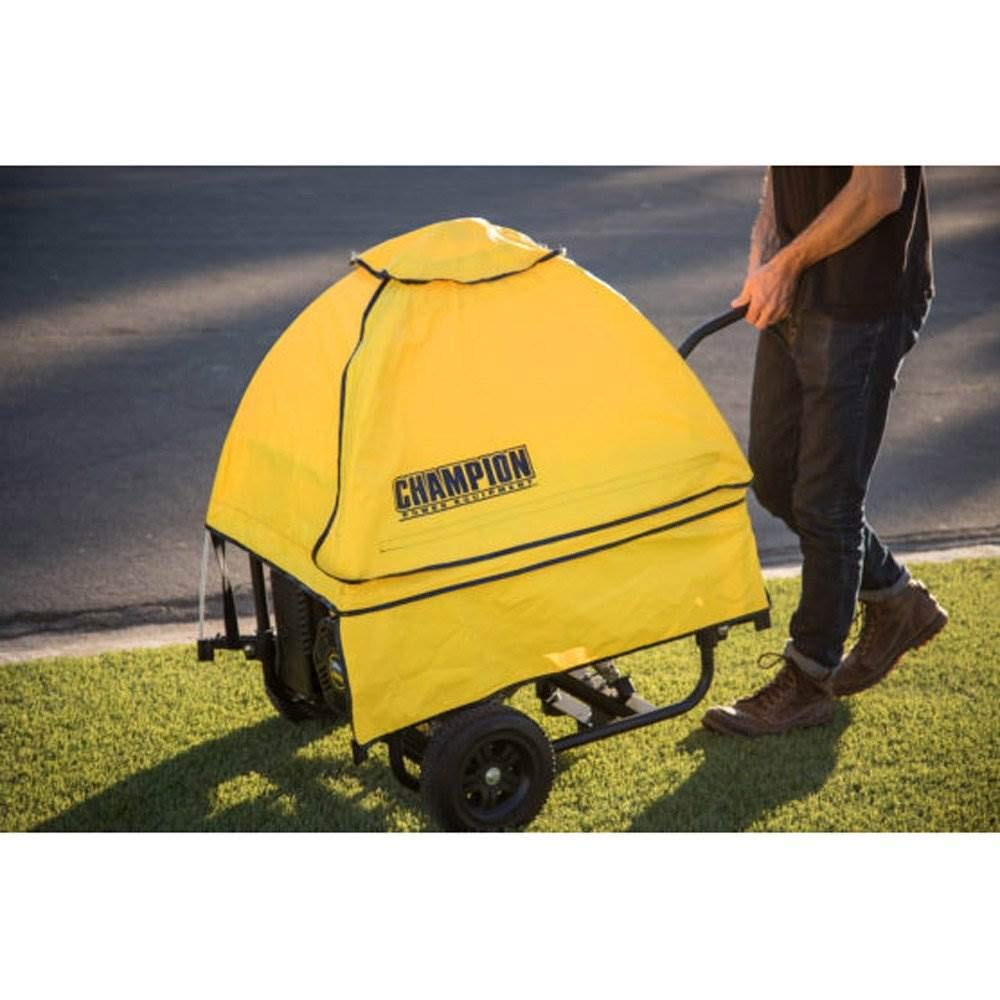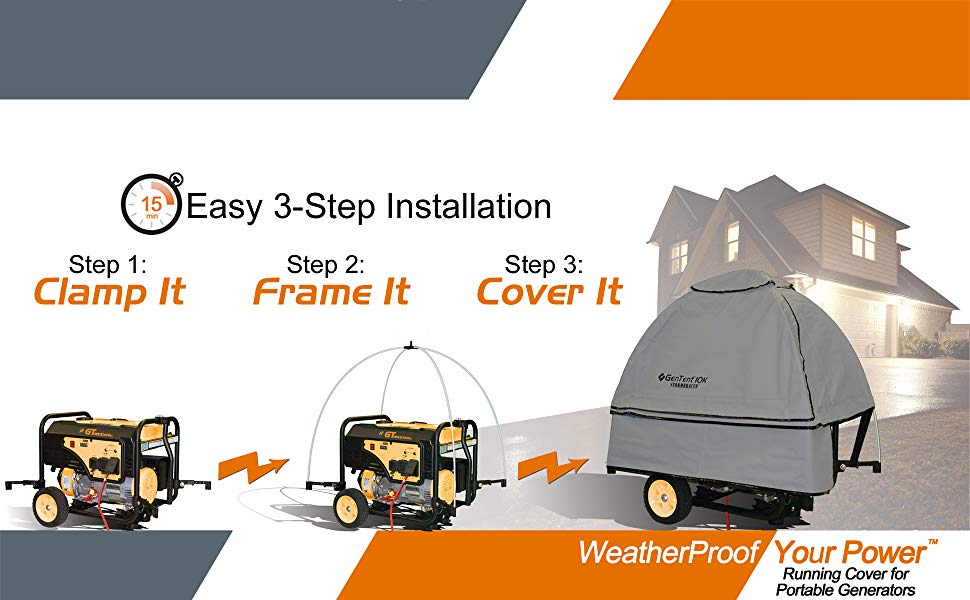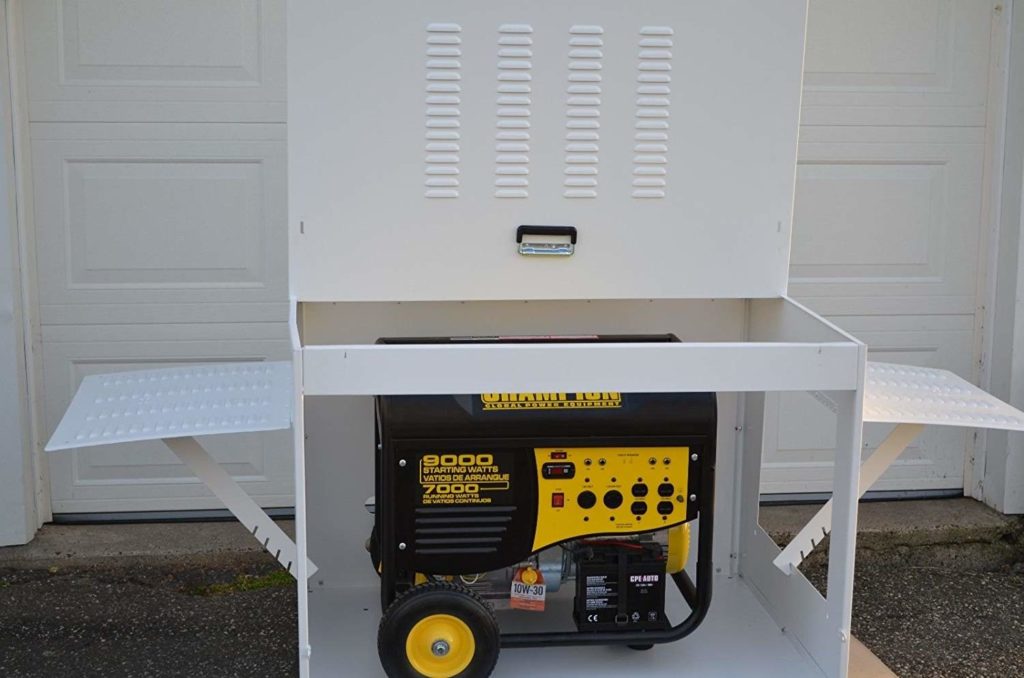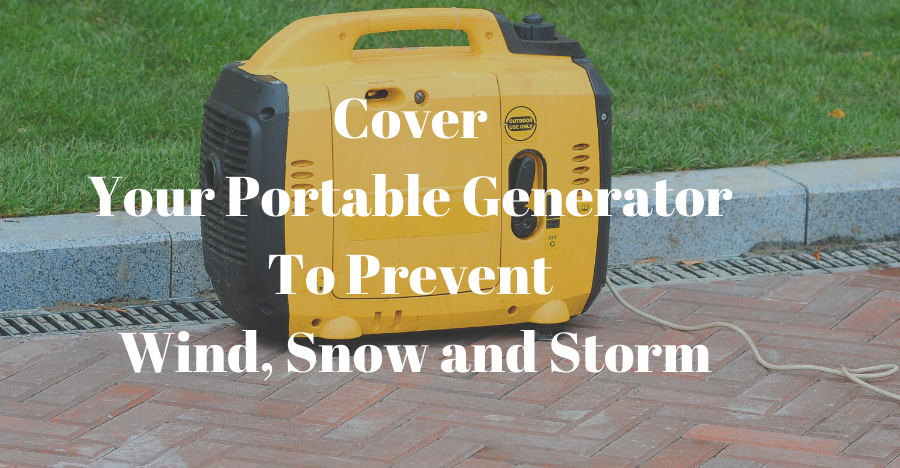You might need to run a portable generator in critical climatic situations like heavy rainfall, snowfall and storm.
Portable generators are designed for such worst conditions that back up the power supply.
You can run the generator, but you will need to operate it with full safety precautions.
Especially, you need to prevent the generator from moisture because there is a significant chance of electrocution.
An investigation from NIOSH surveillance shows that out of 100000 workers- 411 workers were electrocuted each year. And it is the fifth leading cause of death, accounting for 7% of all workplace fatalities.
Thus, you need to cover your portable generator.
Besides these, you need to cover a portable generator to prevent irreparable damage.
Operating the generator by concealing it up with temporary or permanent covers make it run for years.
I suggest you use the permanent cover for the portable generator which we will discuss later.
Once you cover the generator, you can let it run in severe weather situations.
Whether is it rainy or snowy, you will receive sufficient electric supply.
Running Portable Generator in Rain Or Snow
For operating a portable generator in wet conditions, you need to cover the generator.
You can buy a cover for a portable generator. Or you can make it on your own.
Let us first start with DIY Cover!
DIY Cover
You can find different DIY videos to make the best cover for the portable generator. But I found the below video to be genuine because it’s easy to set it up, portable, inexpensive, and on top of that, it keeps the generator dry.
Check out some other DIY Tutorial to make Portable Cover
Tips Before Making DIY Cover
1.WaterProof
Make sure that the cover you made is waterproof. You can see a demo in the video on how it makes the cover waterproof.
The whole enclosure is made of wood. Meanwhile, the upmost part of the enclosure is covered by plastic. This plastic works as a barrier and prevents water leakage.
You can follow any video but make sure that the cover prevents the wet conditions.
2.AirFlow
A generator produces heat. To release that heat, you need to make a cover with sufficient airflow passage.
With that vent, the exhaust goes out, and the natural air goes in. It maintains the temperature of the generator.
If enough vent isn’t provided for cover, the generator gets heated to its maximum level, which might be the cause of the fire.
It might permanently damage your generator.
Check out the consequences of overheating the Generator
3.Windproof
The cover of the portable generator must be windproof. It must have the capability to sustain the normal wind flow.
It is difficult to make a DIY cover to resist high wind pressure. But it must resist normal wind flow.
GentTent attaches the cover to the generator with the help of rod which allows it to prevent high wind pressure.
You can make a DIY cover with the same idea.
4.Portable
You need to make a portable cover if you need to transport the generator from time to time.
With that being said, the DIY portable cover must be lightweight and foldable.
For it to be lightweight, you need to use stuff like fabric, vinyl. This stuff makes it lightweight as well as long-lasting.
Champion Weather Portable Generator By GenTent
I found Champion cover to be the best cover for a portable generator.

- Easy Installation
It’s easy to install meaning that you won’t need any tool to fix it. It’s based on Clamping, framing and installing.

Installation process
- You clamp a rod to the generator
- After clamping a rod, attach a frame into that rod
- Once you attach a frame, you put a cover to that frame.
Due to its easy installation process, you can easily transport the generator along with its cover.
- Withstand Wind, Snow, And Storm
It can withstand wind up to 70 mph, snow load up to 18 inches and rain up to 12 inches per day. Thus, even in the worst weather situation, you can run the generator by covering it up with the champion cover.
It’s fully waterproof and ensures that the generator to be dried up even in the critical weather situation, letting you safely operate it.
- Airflow Design
The way it covers the generator might baffle you that it might heat the generator. But the design of the airflow is wide enough to release hot air and pass natural air through it.
- Pricing
With such outstanding features that can cover up to 3000 to the 10000-watt generators, the price is optimal.
I must say you can go for it to run your portable generator with full safety precautions.
Steel Case Enclosure

You can also use a steel case enclosure. However, there are some downsides to it.
- Expensive
The steel case enclosure is quite costly because the material is made of steel. But it has long durability.
- Difficult Installation Process
It’s difficult to install, which requires professional work.
- Not Portable
The major downside of this enclosure is its portability. It’s heavy, and on top of that, you need to lay a pad of cement to patch this enclosure on which aids additional weight to it.
As a result, it won’t be possible to transport your generator to a different location with this enclosure on. But you can use it at your home.
This enclosure will be a permanent cover.
Some Related Questions
Can A Portable Generator Get Wet?
Of course, a portable generator gets wet. That’s why you need a cover to prevent it from being wet.
Note: You need to check the generator as if it is wet before operating it.
If it’s wet, you need to wait until it gets dried.
Will Rain Ruin a Generator?
Yes, the rain will ruin a generator. If the moisture gets into the outlet, it permanently damages the generator.
Conclusion
There is a high probability of having damage to the generator if it gets wet. Thus, it is wise to use cover which prevents wind, snow, and rain.
You can buy a cover from GentTent or can make a DIY cover. Whether you buy it or make it – it will surely prevent the generators from moisture and wind and make it long-lasting.
If you make a DIY enclosure, you need to take precautions like exhaust vent, windproof, waterproof, etc.
Other generators from GentTent will be a bit expensive in comparison to the DIY enclosure but will be highly protective and makes your generator safe.
If you decided to use a cover or have been using a cover for the generator put your view on it!

